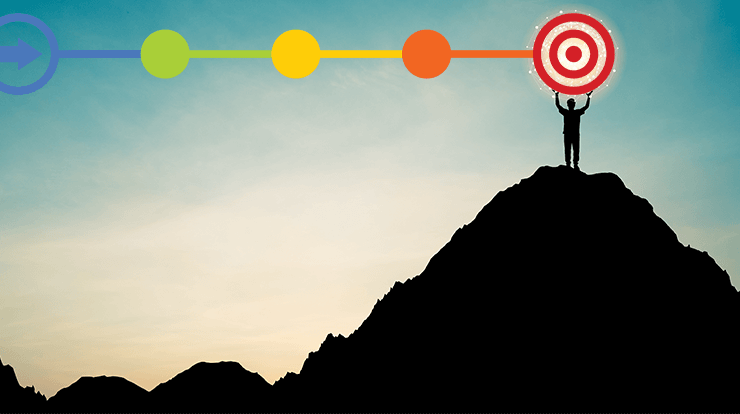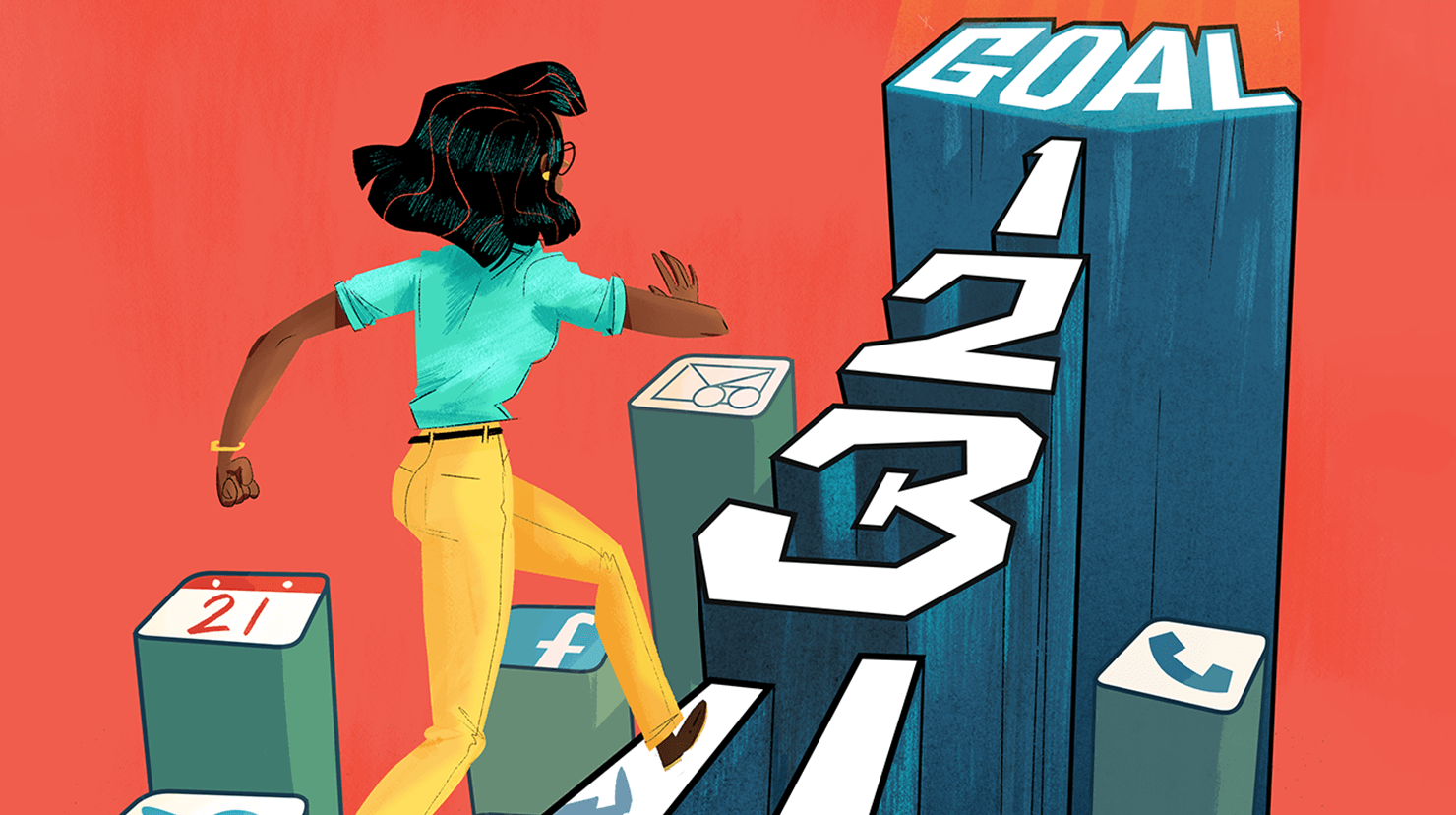In this Toastmasters Podcast episode, Ryan Levesque, DTM, goes from co-host to guest! Click play to hear his thoughts and favorite insights from the emerging field of future-self science.
You likely joined Toastmasters because you wanted to enhance your communication or leadership skills and become an upgraded version of yourself. Perhaps you were driven by a desire to contribute comfortably at meetings, capably lead a team, or exhibit ease during social gatherings.
No matter your goal, a growing body of psychological research provides insights and strategies to help you become your ideal future self.
Organizational psychologist Benjamin Hardy, Ph.D., has been called the world’s leading expert on the application of future-self science. Hardy stumbled upon this field while writing the book Personality Isn’t Permanent. He dove into the future-self scientific literature, resulting in his most recent book, Be Your Future Self Now.
Hardy cites top experts, including University of California, Los Angeles professor of psychology Hal Hershfield, Ph.D., whose research suggests that people who feel more connected to their future self make better choices in important areas like health, finances, and even ethical decision making. As Hardy summarizes it, “The quality of the connection you have with your own future self determines the quality of your life and behaviors now.”
Your future self will be far different from the person you are today.
Hardy also references the work of social psychologist Dan Gilbert, Ph.D., of Harvard University in Cambridge, Massachusetts. Gilbert’s popular TED Talk “The Psychology of Your Future Self” begins with the commonsense claim that the degree to which human beings change slows down over time. “Your children seem to change by the minute, but your parents seem to change by the year,” Gilbert explains. He then makes a more provocative claim: At every age, people vastly underestimate how much they will change in the future.
Examining data from 18- to 68-year-olds, Gilbert found that subjects erroneously predicted that their values, personality, interests, preferences, and activities would remain largely static over the course of a decade. As he puts it, “Human beings are works in progress that mistakenly think they’re finished.”
The data is clear: Your future self will be far different from the person you are today. The good news is that discoveries emerging from the field of psychology can help you shape your ideal future self, and even become that future self—perhaps more quickly than you may realize.
A Dramatic Shift in Psychology
Historically, psychologists explored the problems, or pathologies, that plague individuals. In the 1990s, a new movement called “positive psychology” introduced research on well-being. Pioneers in psychology like Martin Seligman and Mihaly Csikszentmihalyi sought to identify the behaviors and mindsets of those who exhibit optimal well-being.
The positive psychology movement posits that people are driven more by their future than their past. The future you see for yourself—whether it’s a future you desire, or one you wish to avoid—influences your behavior today. As Hardy explains, “We are pulled forward by our future.”
Can You Shape an Uncertain Future?
In a single day, you make countless decisions that affect the “future self” you will become. Never mind major life choices, even seemingly inconsequential ones could have an enormous impact on our future. Who knows, maybe taking public transportation to work one day instead of driving allowed you to avoid injury in a serious motor vehicle accident? Or maybe a podcast you almost listened to but skipped could have sparked a breakthrough idea to explode your business?
If you consider the unpredictability of life, you might wonder how you can even hope to shape your future. If you are feeling doomed to the whims of chance, here are a couple of ideas to consider.
First, the ultimate accuracy of your hopes and predictions for your future self is less important than having a concern for your future self. When you relate to your future self as a real person, as someone important to you, you’ll be more likely to make choices today reflecting that care and concern. As Hershfield’s research shows, people who feel more connected to their future self tend to make choices oriented toward long-term success rather than immediate gratification.
The future you see for yourself—whether it’s a future you desire, or one you wish to avoid—influences your behavior today.
Second, your aspirations for your future self serve as a North Star to guide you. The more deeply and frequently you connect with your ideal future self, the more likely you’ll make choices that align with that vision.
So, while you may not predict your future with perfect accuracy, the research suggests that having a concern for your future self and a clear ideal vision of your future will increase your likelihood of making choices that prioritize your future. It seems reasonable to assume the compounded effect of positive choices will increase your odds of achieving positive outcomes.
Get to Know Your Future Self
How can you develop a concern and vision for your future self? Hardy offers a simple way to begin: Write a letter to your future self. In your letter, share with your future self about the person you hope to grow into. “Make your vision clear and bold,” says Hardy.
You can write to your six-months-from-now future self, or your 10-years-from-now future self. Hardy says actually doing the exercise is more important than the time frame.
A similar suggestion comes from David Robson, a science writer based in London, England, who has also written about the future self. Robson suggests, “Write a letter to yourself 20 years from now, describing what is most important for you now and your plans for the coming decades.” He explains the exercise “encourages people to feel a greater sense of connection with their future self—and, as a result, primes them for positive behavioral change.”
If you are keen to try this out, Robson adds you can amplify the effects by also writing a reply from your future self, as it will force you to adopt a long-term perspective.
It’s Not Magic
At first glance, strategies based on future-self research might look like positive thinking or manifesting. However, there’s nothing mystical behind them. Implementing future-self strategies does not eliminate the need to put forth effort to achieve your goals.
In Be Your Future Self Now, Hardy stresses the importance of fully committing to your future self. That, he explains, requires sacrifice, including a willingness to back away from distracting “lesser goals” that could take you off course. Hardy encourages readers to schedule their future self’s priorities on today’s calendar. By taking bold action today aligned to what’s important to your future self, you can, as the title of Hardy’s book suggests, “be your future self now.”
Victor Frankl, MD, Ph.D., was an Austrian psychiatrist and author. In his classic book Man’s Search for Meaning, Frankl offers the following admonition:
“Live as if you were living already for the second time and as if you had acted the first time as wrongly as you are about to act now!”
To state Frankl’s idea another way, rather than wishing you had an opportunity for a “do-over,” what if you acted from the start with the insight and perspective of your future self? Let’s look at an example of this idea in action.
“Human beings are works in progress that mistakenly think they’re finished.”
–Dan Gilbert, Ph.D.You have a presentation to deliver at work. You get up to speak, beginning tentatively. After several minutes, you finally get in the groove. Eventually, you finish and take your seat. You feel like it went “just okay.” But you know if you had another chance to get up and give that presentation again, you’d nail it.
Can you relate to that example? (If not, can you find a parallel example? Maybe giving a speech at your Toastmasters club? Getting up to respond to a Table Topic®? Or attending a networking event?) Let’s look at how you might apply Frankl’s advice.
Start by thinking of your future self. In this case, however, it doesn’t have to be your whiz-bang five-years-from-now ideal future self. Shorten the time frame and think of “future you” a few minutes into your speech—after you’ve warmed up. Now think of your post-presentation future self, wishing you had the opportunity to travel back in time and give it another go. Now give your future self that gift! Invite your confident post-presentation future self to step in and give that presentation. Be your future self and begin with an already warmed up energy.
To paraphrase Frankl, imagine you’ve already lived the moment poorly, and you have the blessed opportunity to come back and re-live it wisely. Then step boldly into action.
WOOP Yourself Into Shape
German academic and psychologist Gabriele Oettingen, Ph.D., warns against the insufficiency of popular approaches to positive thinking in her book Rethinking Positive Thinking. Oettingen’s research focuses on how people think about their future and the effect it has on their thoughts, emotions, and behaviors. She popularized an aspect of her research (known formally as “mental contrasting with implementation intentions”) into something she calls the WOOP method. It’s a simple technique for dealing with the inner obstacles that can keep you from your desired future.
WOOP is an acronym for Wish, Outcome, Obstacles, and Plan. The method first invites you to enter a quiet, reflective state, and bring to mind a deeply held wish for your life. Second, imagine the successful outcome—the impact it would have if that wish came true. Next, consider what inner obstacle might interfere with your attaining it. Finally, come up with an “if-then” plan to deal with the obstacle. In other words, if a specific situation arises, then you will take a pre-determined action to deal with it.
For example, consider a Toastmaster who wants to compete in a speech contest for the first time, but feels anxious. Using the WOOP method, she might make the following notes.
Wish—I would love to compete in the club’s upcoming speech contest.
Outcome—Win or lose, the process of preparation and practice will help me become a better speaker and increase my confidence.
Obstacles—My worries about competing could cause me to avoid preparing my speech. If I procrastinate too long, I might drop out of the contest.
Plan—If I feel nervous, I’ll write in my journal for five minutes about why participating in the speech contest matters to me.
Oettingen’s WOOP method acknowledges that dreams don’t come true just by wishing upon a star. By identifying inner obstacles in advance and creating a plan for dealing with them, you’ll be better equipped to deal with them.

Measuring Progress Toward Your Future Self
Putting continued effort into implementing future-self strategies only makes sense if it actually improves your life. But how can you tell? Canadian business coach Dan Sullivan offers a best practice.
“The way to measure your progress is backward against where you started, not against your ideal.”
Sullivan and Hardy co-authored The Gap and The Gain, a book about this simple yet powerful concept. The authors claim most people naturally measure themselves against their ideals. While that sounds like a reasonable approach, they warn that it is an easy way to get discouraged. Rather than measuring the “gap,” they recommend turning around and looking back at where you started. Measure your progress—your “gains”—and you’ll be more likely to stay motivated, and less likely to feel discouraged and quit.
Let’s apply their advice to your Toastmasters journey. Rather than counting the many projects you’ll need to complete before you can achieve the Distinguished Toastmaster award, consider instead how your speaking skills have grown since you joined Toastmasters. Remember your first meeting? Table Topics? Your Ice Breaker speech? Measure how far you’ve come since then. Even if it feels like you’re a long way off from where you want to be, you are further ahead than when you began! Turn around and look back at the starting line. Acknowledge and celebrate those wins—your gains—and fuel your motivation.
You may still have a long way to go to reach your ideal future self as a speaker or leader, or in any other domain of life. That’s okay. Measure and embrace the gains you’ve made. Keep moving forward, chasing after your ideal future self.
As social psychologist Gilbert’s TED Talk suggests, you will change more over the next decade than you realize. But as leadership expert and Toastmasters’ 2012 Golden Gavel recipient John Maxwell warns, “Change is inevitable, growth is optional.”
Your active involvement in Toastmasters is a sign of your commitment to growth. Why not add future-self strategies to supercharge your growth?
- Write a letter to your future self.
- Back away from lesser goals and schedule your future self’s priorities today.
- WOOP yourself into shape.
- Measure your gains along the way.
Your future self will thank you!
Ryan Levesque, DTM is a writer based in Massachusetts, and a co-host of the Toastmasters Podcast. Find him on LinkedIn and at WordsOnChain.com.
Related Articles

Personal Growth
Connecting the Dots From Goals to Purpose

Personal Growth
Write On! Journaling to Excellence

Personal Growth



 Previous
Previous

 Previous Article
Previous Article